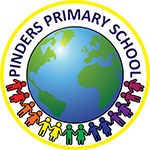Chronological Understanding
|
|
Early Years |
Year 1 |
Year 2 |
Year 3 |
Year 4 |
Year 5 |
Year 6 |
|
Chronological understanding |
Talk briefly about past events at home e.g. 'yesterday'
They use past, present and future forms accurately when talking about events.
Talk about brief differences in the past. For example, they can find out about the childhood of their grandparents.
|
Beginning to have an awareness of time.
Starting to put events and people in order relating to time.
Beginning to have an awareness of past and future. |
Place events onto a timeline.
Understand that time passes in years.
Understand the difference between events that happened in the distant past e.g. The Great Fire of London and events that happened in the recent past e.g. A family party at the weekend.
|
Understand that a timeline can be divided into BC and AD.
Use a timeline to place historical events in chronological order.
Describe eras and order significant events from the period studied.
Ordering events within the period.
|
Use a timeline to place historical events in chronological order using dates.
Place certain eras on a timeline showing understanding of BC and AD.
Identifying the main changes within the period of History.
Chronological understanding is focused within the period studied.
Ordering events across periods.
|
Identify and describe change and continuity within and across historical periods.
Begin to understand how some historical events occurred concurrently in different locations i.e. Ancient Egypt and Prehistoric Britain.
|
Gain historical perspective by placing their growing knowledge into different contexts: understanding the connections between local, regional, national and international history; between cultural, economic, military, political, religious and social history; and between shot and long term time scales.
|
